15+ SAMPLE Work Accident Report
-
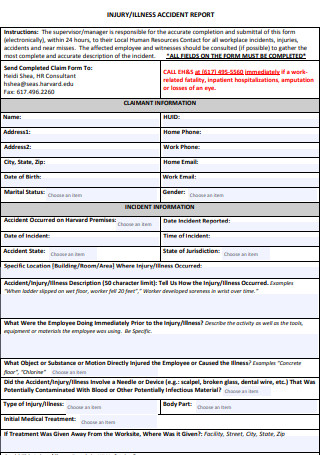
Work Injury Accident Report
download now -
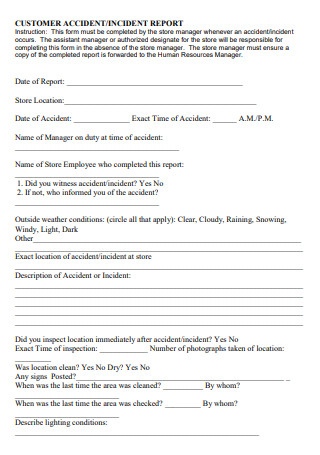
Customer Work Accident Report
download now -
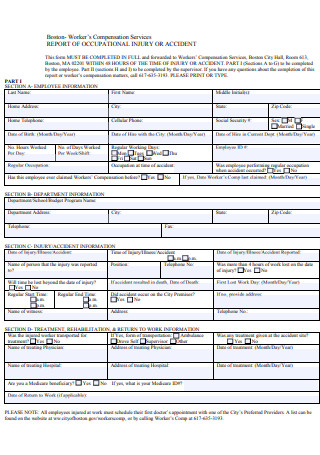
Occupational Work Injury Accident Report
download now -
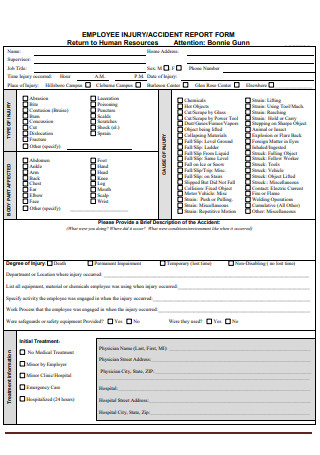
Employee Work Injury Accident Report
download now -
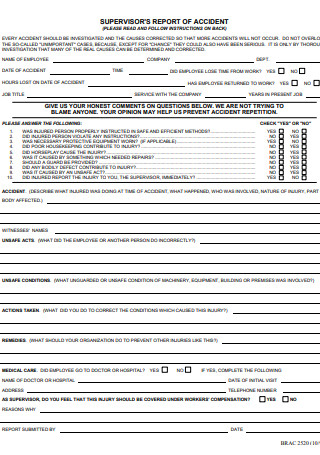
Supervisors Work Accident Report
download now -
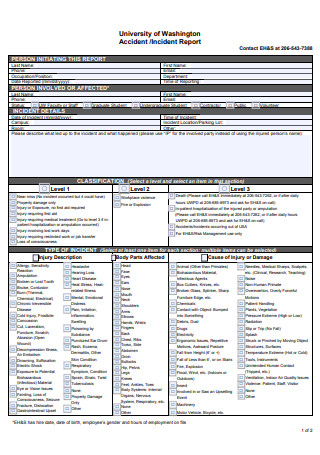
Workplace Accident Report
download now -
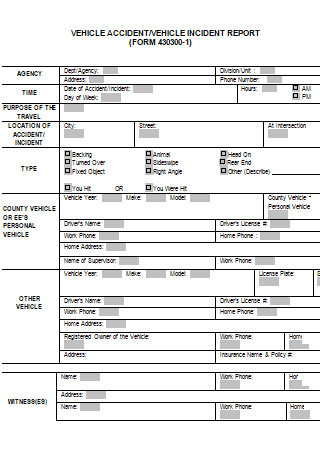
Work Vehicle Accident Report
download now -
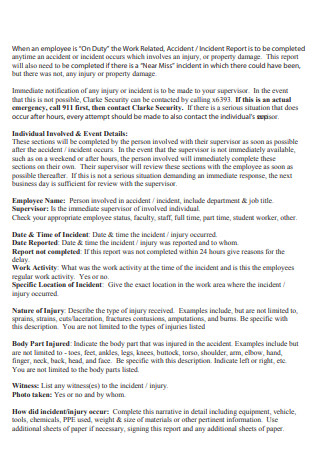
Work Activity Accident Report
download now -
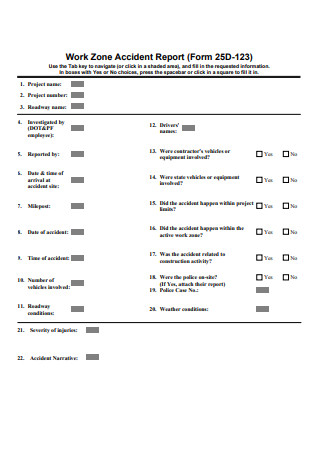
Work Zone Accident Report
download now -
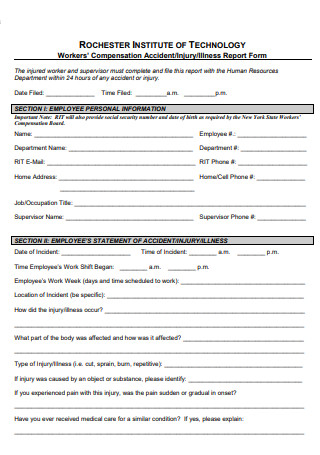
Workers Compensation Accident Report
download now -
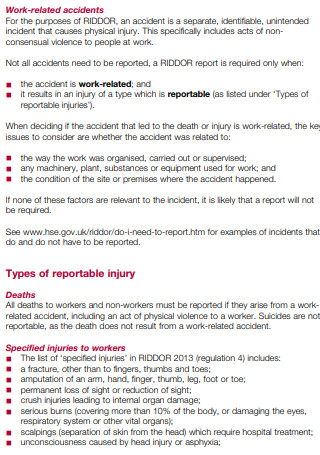
Reporting Accidents at work
download now -
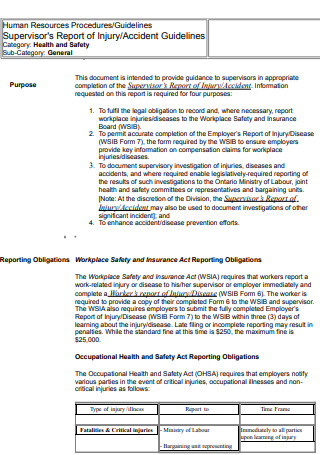
Work Accident Supervisors Report
download now -
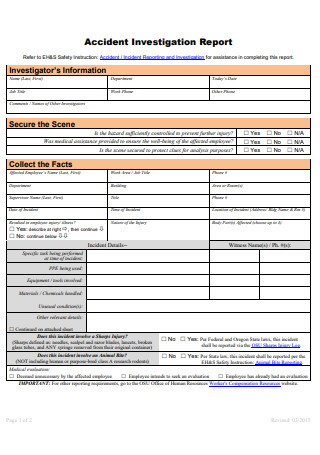
Work Accident Investigation Report
download now -
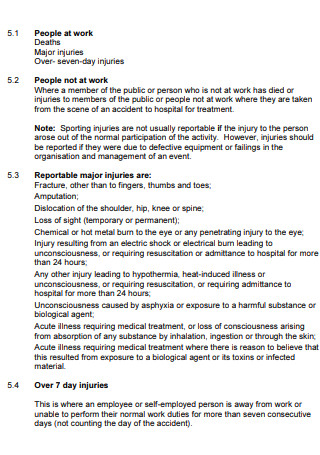
People at Work Accident Report
download now -
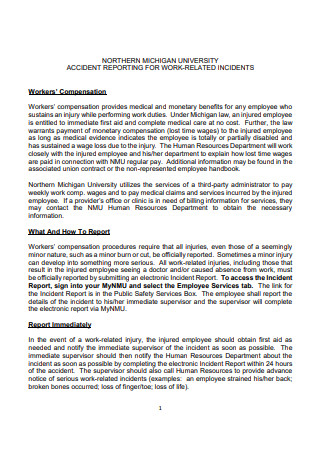
Work Related Incident Accident Report
download now -

Annual Work Accident Report
download now
FREE Work Accident Report s to Download
15+ SAMPLE Work Accident Report
What Is a Work Accident Report?
Why Is It Important to Report Workplace Accidents?
What Should Be Included in an Accident Report?
How to File a Work Accident Report
Additional Reminders in Writing a Work Accident Report
What to Do after a Work-Related Accident Report?
Why Is It Necessary to Keep Track of Occurrences in an Accident Book?
FAQs
How to report a work-related accident?
What else to include in a work accident report?
What rights do I have if I’m injured at work?
What should my supervisor do if I get into an accident?
What Is a Work Accident Report?
An Accident Report is a document that an employee or management completes in the event of a workplace injury, sickness, or near-miss. The words accident and incident are frequently interchanged; nevertheless, an accident report emphasizes a suffered injury, whereas an incident report emphasizes the cause of an occurrence and how an employer may prevent it in the future. Even if an employee was not injured, you should file an incident report.
Why Is It Important to Report Workplace Accidents?
It is a legal duty to report a work-related injury, sickness, death, disease, or other hazardous events. By identifying and investigating the location and source of specific Risk indicators, the report aids the health, safety, and environment authorities and other local organizations. You are giving your company the information to identify hazards and develop solutions to prevent future occurrences by reporting an accident that you were directly involved in or saw.
What Should Be Included in an Accident Report?
When an employee is involved in a work-related event or an accident that results in an injury, you may be overwhelmed by what information should be included in the accident report. The list has been curated for you to easily follow and use as a reminder for the necessary information to be included in a report. Feel free to check out examples of accident report at workplace provided for you.
How to File a Work Accident Report
Promptness is key and you would want to immediately report the accident as soon as you can. But before you jump into writing your work accident report, you can ask your company if they have a template already. If they don’t, then this article provides you with multiple work accident report samples that you can utilize. It is important that you complete all areas of the form and double-check that the information supplied is correct and free of errors or typos. Keep on reading to know the steps on writing a work injury report so you would know how to do it when the situation calls for it.
Step 1: Date, Time, and Location of the Accident
The very first step you should write about is the relevant details regarding the accident. This includes the date it occurred and if possible, the exact time it took place or at least an estimation of it, then lastly the location it transpired. You may think that since the probability of the accident to occur within the company building is high then you wouldn’t need to specify it, contrary, you should still be meticulous in providing exactly which room within the building did the accident take place.
Step 2: Nature of the Accident
The next step requires you to elaborate on the nature of the injury, whether or not there were symptoms shown prior to the escalation of the situation. And how it affects your health status or the disruption it has to your ability to perform your tasks for your job. Make sure to elaborate what you know is factual and don’t overexaggerate details to make the situation more critical than it seems. Otherwise, during the investigation, details may not be as accurate.
Step 3: Aggravation of the Injury or Illness
For the third step, you would need to explain the events prior to the unfolding of the accident as well as how they led to the accident transpiring. This includes specific details about what you were possibly doing prior to the aggravation of the injury or illness in order to identify the work-related activity that could have caused it. List out the environmental conditions, whether or not the floor was rather too slippery, or the lighting was bad, the circumstances or the tools and materials involved, and of course the specific injury and which part of the body it can be seen on.
Step 4: State the Affected Employees
If you were not the only one harmed or affected by the accident, then this is the part where you will be listing down the names of the other employees that were involved in the accident. You can also elaborate more on how the accident affected them and what serious injury it led to. Also, you can apply the earlier step of what specific action they were doing prior to being affected by the accident.
Step 5: Add in Witness Statements
If there were witnesses who firsthand saw how the accident transpired but was not affected by it, you can collect their Statements for further proof and credibility to your report. Their word may be crucial upon the review of the authorities or higherups of the situation in assessing a manner to address it and come up with a solution.
Step 6: Recovery Process
If you have had any medical treatment, examination, or diagnosis since the accident, you can write about it. This step applies only if the accident has caused an injury or illness in you to trigger or open up. Otherwise, you may disregard this step if the accident did not cause any harm in your body to trigger or you were not taking any medical aid prior to it.
Additional Reminders in Writing a Work Accident Report
It’s critical to have a methodical approach to accident examination. A report must include all relevant details regarding the accident or near-miss. The procedure starts with gathering information and finishes with recommendations for avoiding costly workplace accidents in the future. Here are additional tips in writing a work accident form.
What to Do after a Work-Related Accident Report?
Give the workplace accident report form to your employer once you have completed it satisfactorily. It’s critical that you preserve a copy of that report. Keep copies of any papers you fill out and all documentation you get once your employer has been alerted about your working accident. Make a list of how your Work-related injury or sickness impacted your capacity to do your job and everyday activities. All pay stubs, checks, or receipts for any prescription, medicines, medical equipment, diagnosis, treatment, surgeries, or visits connected to your accident or sickness should be kept. Following a job injury, you may be compensated for any out-of-pocket expenditures.
Why Is It Necessary to Keep Track of Occurrences in an Accident Book?
It is critical for both the employee and the employer involved in an accident to record the specifics of the occurrence in the accident book. It’s critical to keep recording accidents at work for the specifics of the event, such as the cause, injuries, and symptoms. This may then be compared to medical records to prove that the event occurred, which can be used to support your workplace accident report.
The accident book gives companies the information they need to implement new and better health and Safety measures and avoid future incidents. Following an injury at work, your employer should take a number of additional actions to assist you in your recovery. Accident books have a common format to them such as containing the name and contact details of the injured employee, the person who reported the accident and their respective contact details, and of course the information regarding the accident such as the date, time, and location.
FAQs
How to report a work-related accident?
Whenever you are injured at work, you should make sure that the accident is properly reported to the person in charge or to your employer. Following a workplace accident, regardless of how small or severe the workplace injuries are, you should follow the company’s protocol. If an accident book exists, double-check that the specifics and degree of your injuries are accurately documented. If your company has an absence of an accident book, you can direct your concern or report to your employer’s personal email as soon as possible after an accident at Work.
What else to include in a work accident report?
In an accident at work claim, you might include both damages and losses. The damages you were granted would be in the form of “general damages,” which would pay you for your suffering, pain, and loss of amenity. The losses you suffered would be compensated in the form of “special damages,” which are considerably easier to compute because they are based on “real” expenses and charges that you paid out as a direct result of your workplace injury.
What rights do I have if I’m injured at work?
Following an injury at Work, you have specific rights, including the right to seek legal advice from a personal injury lawyer, the right to seek compensation for workplace injuries you sustained through no fault of your own or because you were partially responsible or contributory negligence, and the right not to be discriminated against, treated unfairly, or fired as a result of your injury.
What should my supervisor do if I get into an accident?
If you are wounded at Work, it is critical that you notify your boss as quickly as possible. The first priority for your employer should be to guarantee that you are not in immediate danger and that you get medical help as quickly as possible. This might be from a first responder or by requesting an ambulance.
Managers, supervisors, and higherups in the company would want to treat their employees with the utmost respect and care for their contributions and work in the company. Ensuring their safety is a top priority and through the work accident report, companies are able to keep track of accidents and can work on addressing them and prevent it from repeating in the future. No employee wants to sustain injuries and as much as possible, no company wants to bring harm to their employees. This article not only provided you the steps in writing a work accident report but also explained the importance there is to filing one. If your company still does not have a template of your own, feel free to use one from this article!
